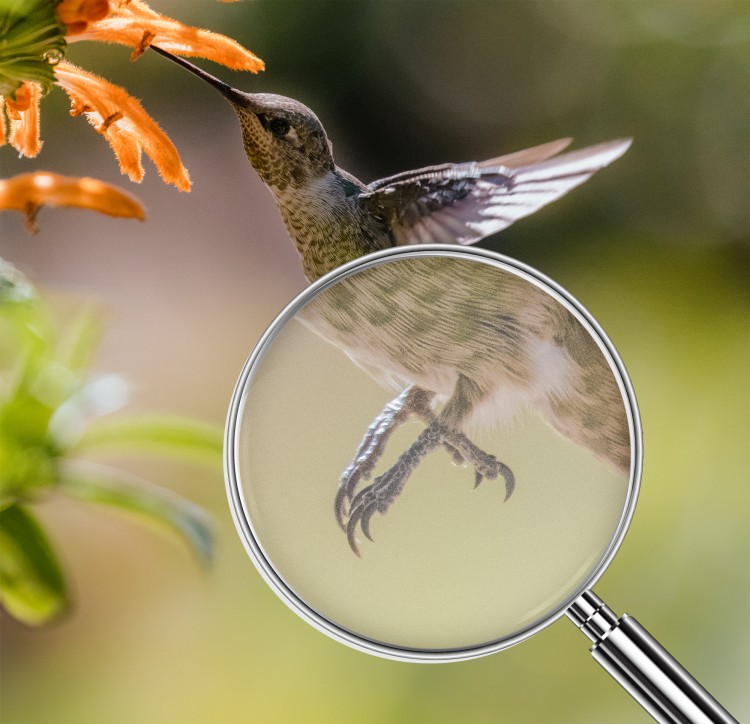Hummingbird Week 2024
Busting a Bird Myth: Can Hummingbirds Walk?
Hummingbirds are fascinating creatures known for their incredible flight abilities and iridescent plumage. One intriguing aspect of their biology is their feet, which have given rise to a common myth: hummingbirds' feet are only strong enough for perching, and therefore hummingbirds cannot walk. While this statement contains a kernel of truth, it is a bit of an oversimplification. For Hummingbird Week, let's explore the reality behind this myth and uncover the unique adaptations of hummingbird feet.
Hummingbirds have very small, delicate feet, which are indeed primarily adapted for perching rather than walking. These tiny birds have evolved feet that allow them to cling to branches, leaves, or feeders securely. Their toes are equipped with strong, curved claws that can grip tightly onto perches. This adaptation is essential for their survival, as it enables them to rest between their frequent and energetically costly flights.

Close-up of small, delicate hummingbird feet, dangling as the bird hovers and feeds
Like most birds, hummingbirds have three forward-facing toes and one backward-facing toe. The inner surface of the claws are ridged for better gripping when perched.
Although hummingbirds can grip and perch effectively, their feet are not well-suited for walking or hopping on the ground. Their legs are relatively short and weak, and they lack knees, which limits their ability to move around on flat surfaces. When on the ground, hummingbirds may appear clumsy, and their movements are more like shuffling than walking. This lack of walking ability is because their legs and feet are highly specialized for minimizing weight and maximizing efficiency in the air.
Hummingbirds' exceptional flight capabilities further explain why their feet are not designed for walking. These birds are among the most agile fliers in the avian world, capable of hovering, flying backwards, and making rapid, intricate maneuvers. Their wings beat incredibly fast, sometimes up to 80 times per second, requiring a lightweight body structure to support this intense activity. Streamlined little legs and feet contribute to their overall aerodynamic efficiency.
Myth not busted, but explained: while the myth that hummingbirds cannot walk is not entirely accurate, it highlights the fascinating adaptations these birds have evolved to thrive in their ecological niche. Their feet are perfectly suited for perching, allowing them to rest and conserve energy between feeding on nectar, catching insects, and performing their remarkable aerial displays.
Understanding the unique adaptations of hummingbird feet gives us a deeper appreciation for these extraordinary birds. It also underscores the incredible diversity of the avian world, where each species has evolved specialized traits to survive and flourish in its environment.





Comments
Leave a comment
Thank you!